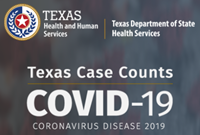A common wintertime pest in cattle herds – lice – can suck money from producers’ pockets.
Cattle producers should be mindful of a common pest – lice – in their herd. Longer winter coats on cattle provide ideal conditions for populations to grow and become a problem that can hurt herd health and producers’ profitability.
Lice can infest cattle throughout the year, but more problems are seen from December to March. As the weather gets colder, cows grow longer, thicker hair and that produces better cover and protection for lice, which means the lice have better reproductive rates. There are two types of lice that affect cattle herds, biting lice and sucking lice. Lice will cause reduced appetite in a herd, which means reduced performance. It’s important to be aware of the pest this time of year. Lice can also reduce red blood cells by 75 percent, and animals with heavy infestations can become anemic. They are transmitted through physical contact between cows. Breaking the pests’ life cycle is the key to lice control.
It’s important to know that available treatment products don’t kill the eggs. So, many control methods will take two treatments before the life cycle is broken. And always treat every animal in the herd because that one you don’t treat will be the one that causes another infestation for you to deal with.
If using traditional insecticides like Cylence or most permethrin-based products, then an initial insecticide application should be made to knock down populations followed by another application 2-3 weeks later.
There are products available like Standguard and Clean-up II that require only one treatment. Additionally, certain pour-on dewormers including – Eprinex, Cydectin and Dectomax – only need to be applied once this time of year for season long control.
If you go with an injectable dewormer for internal parasites, it’s important to know they only get the sucking lice and won’t control biting lice. If they use injectable dewormers, make sure you use a pour-on insecticide to take care of the biting lice.
Always read and follow label directions when using dewormers and insecticides for control. Any new cows or bulls should be treated prior to introduction to the herd. After the treatment regimen, your cattle will typically be in good shape until the next fall or winter. Treat them, control them, and you’re done.
Lane Dunn is the County Extension Agent for agriculture and natural resources for Shelby County. His email address is jldunn@ag.tamu.edu
Educational programs of the Texas A&M AgriLife Extension Service are open to all people without regard to race, color, sex, disability, religion, age, national origin, genetic information or veteran status. The Texas A&M University System, U.S. Department of Agriculture, and the County Commissioners Courts of Texas Cooperating.
.jpg)



 Click For Louisiana
Click For Louisiana
